JIM McCORMAC
Reproduced with permission from Jim McCormac’s Blog, Ohio Birds and Biodiversity
Read more of Jim’s terrific blog posts here
Jim worked for the Ohio Department of Natural Resources for 31 years as a botanist, and later specializing in wildlife diversity projects, especially involving birds. He has authored or coauthored six books, including Birds of Ohio. Jim is an avid natural history photographer and writer.
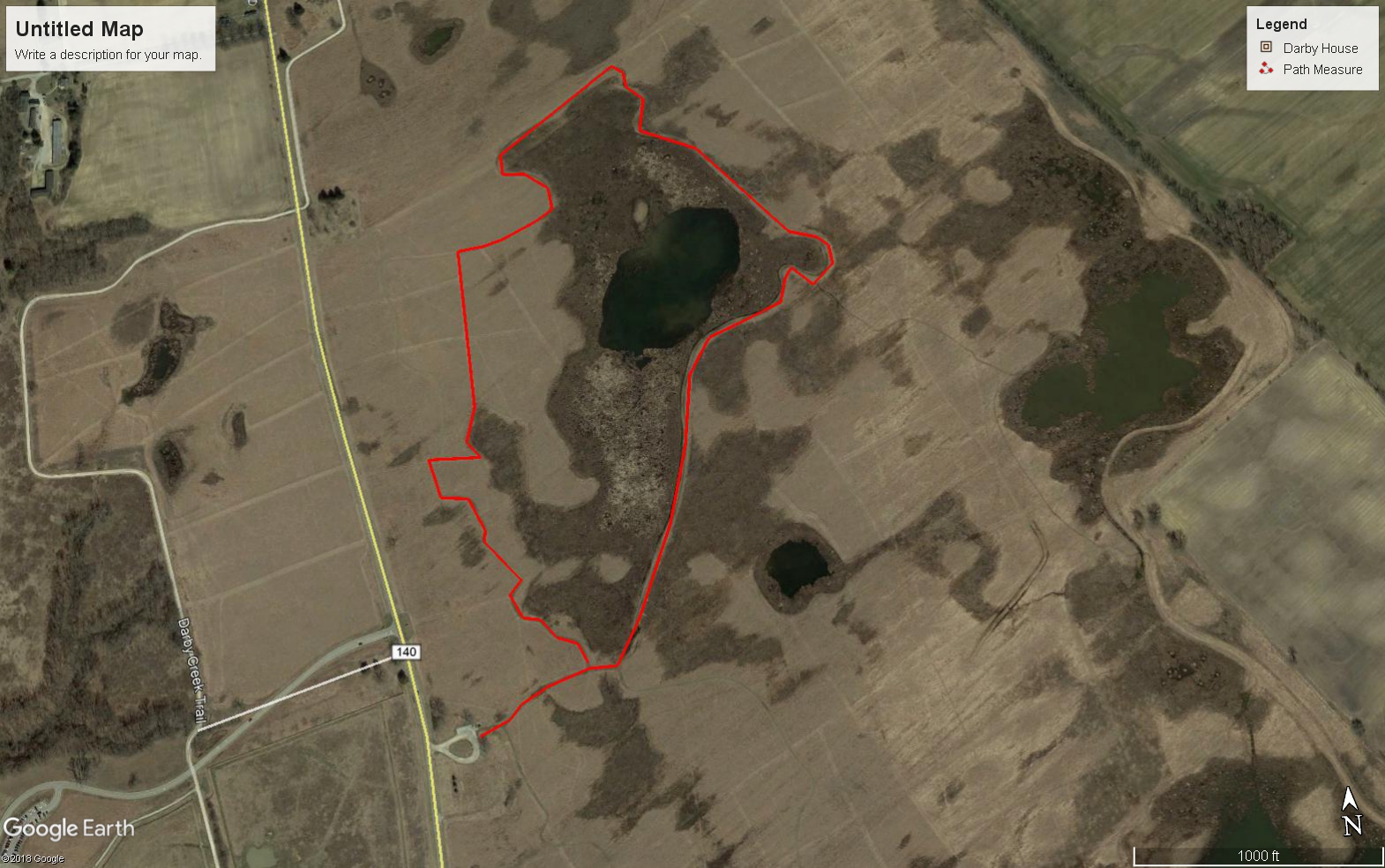
Battelle Darby Creek Metro Park as seen from Google Earth. This is just a snippet of the sprawling 7,000 acre park, but this patch is my favorite spot. It is a recently restored wet prairie, and the transformation from barren croplands to vibrant prairie has been remarkable to watch.
A few times a year, I’ll get here and always take the “Teal Trail” as outlined in red. It’s about a mile and three-quarter hike, and passes by great habitat. I always find interesting animals along this path, and today was no exception.
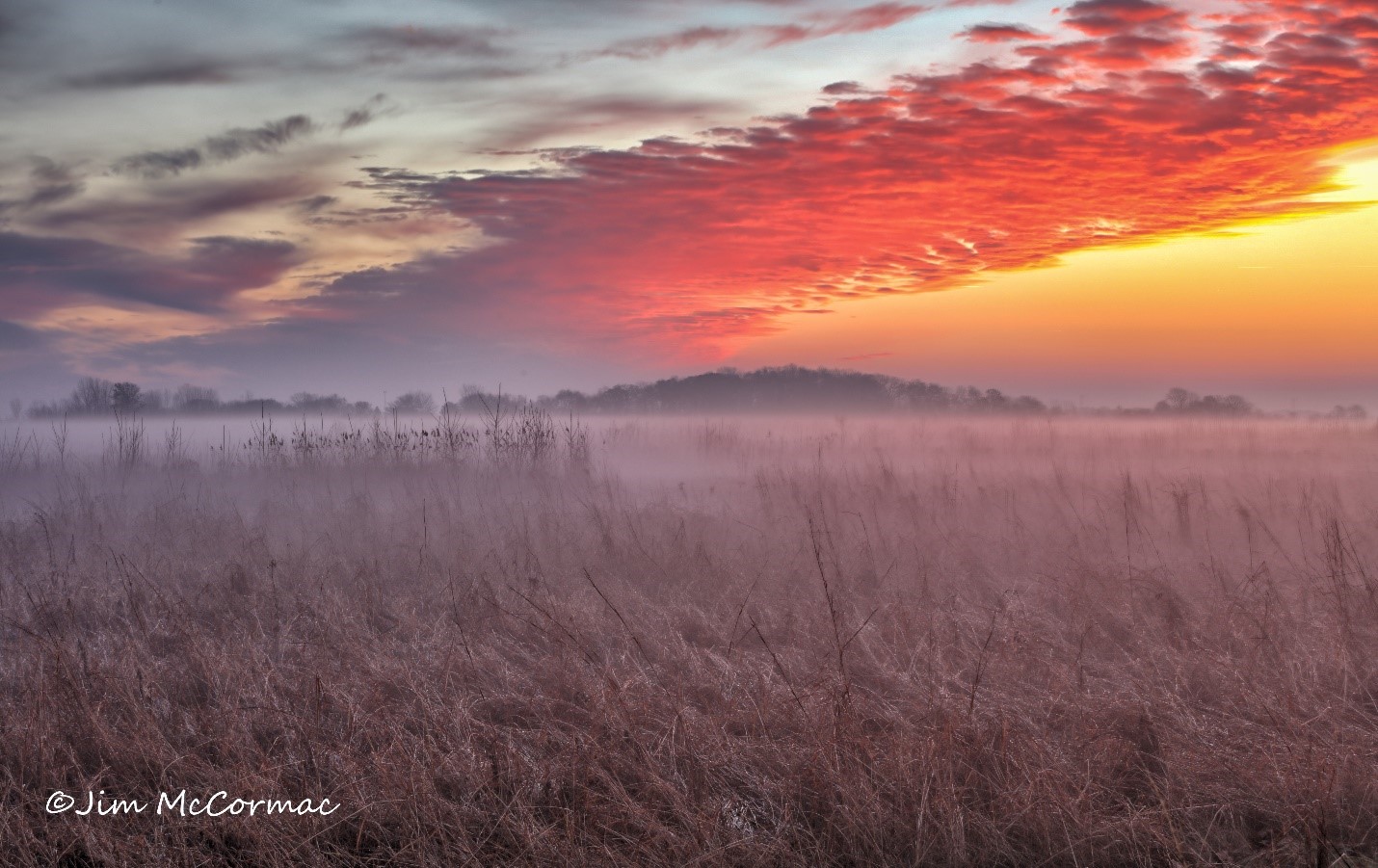
A distant pair of duetting great horned owls and a pack of singing coyotes provided the soundtrack. Lapland longspurs were passing overhead, giving their melodious whistles and dry rattles, and a pair of northern harriers was hunting the meadow.
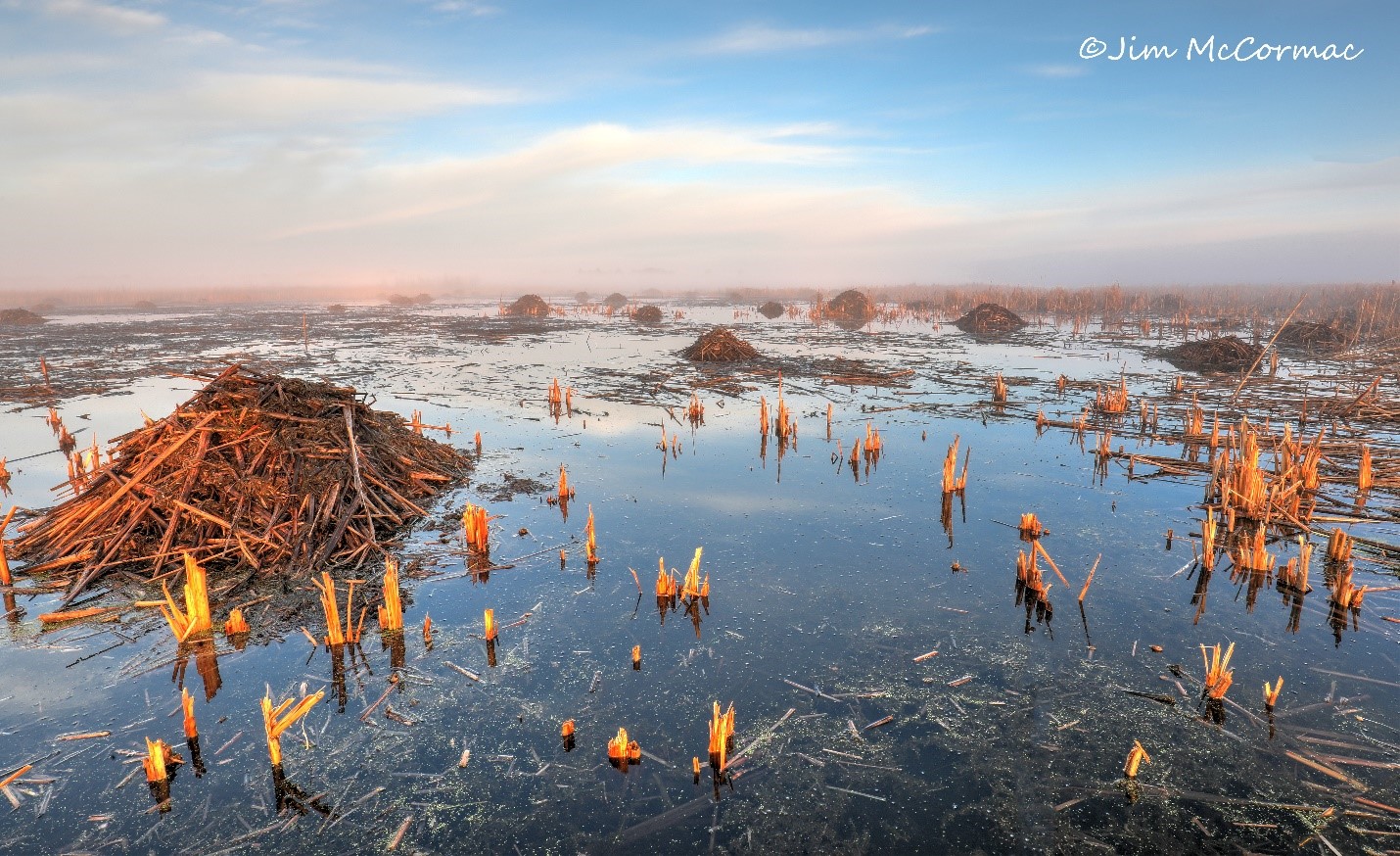
While shooting animals was my main mission, the early morning light and fog was just too beautiful to not fully drink in, so I grabbed 16-35mm and 70-200mm lenses (Canon, of course), and set out to make some images of the landscape. It was still too dark for good animal photography work, anyway.
Last time I was in this spot – many months prior – cattails were starting to dominate this marsh. Not now. Muskrats have stepped up to the plate and opened the marsh back up. Their conical lodges were quite conspicuous, and so were the aquatic mammals as they swam about harvesting plant material and mud as they labored on their lodges.
After taking this shot, I returned to the vehicle for some heavy artillery: my tripod-mounted Canon 800mm lens linked to the Canon 5D IV, and attached to a Black Rapid strap around my neck was the Canon 5DSR and 500mm f/4 lens. The latter setup is so light it can easily be handheld for birds in flight, or that are within the 800’s minimum focusing distance of 19 feet. The Black Rapid strap makes carrying a camera much easier, even a fairly heavy one. It distributes the weight in a balanced manner, and takes all the pressure off the toter’s neck and shoulders. More about these straps HERE.
While gear like that isn’t cheap, the big telephotos are worth their weight in gold when stalking wildlife. My main game when out on solo missions like this is to try and locate the quarry before they see me, or at least approach subjects in a way that doesn’t overly disturb them and allows me to get fairly close. With big lenses one doesn’t have to get too near, and thus the critters will often go about their business as they normally would. This always leads to better shots, and is better for the critters.
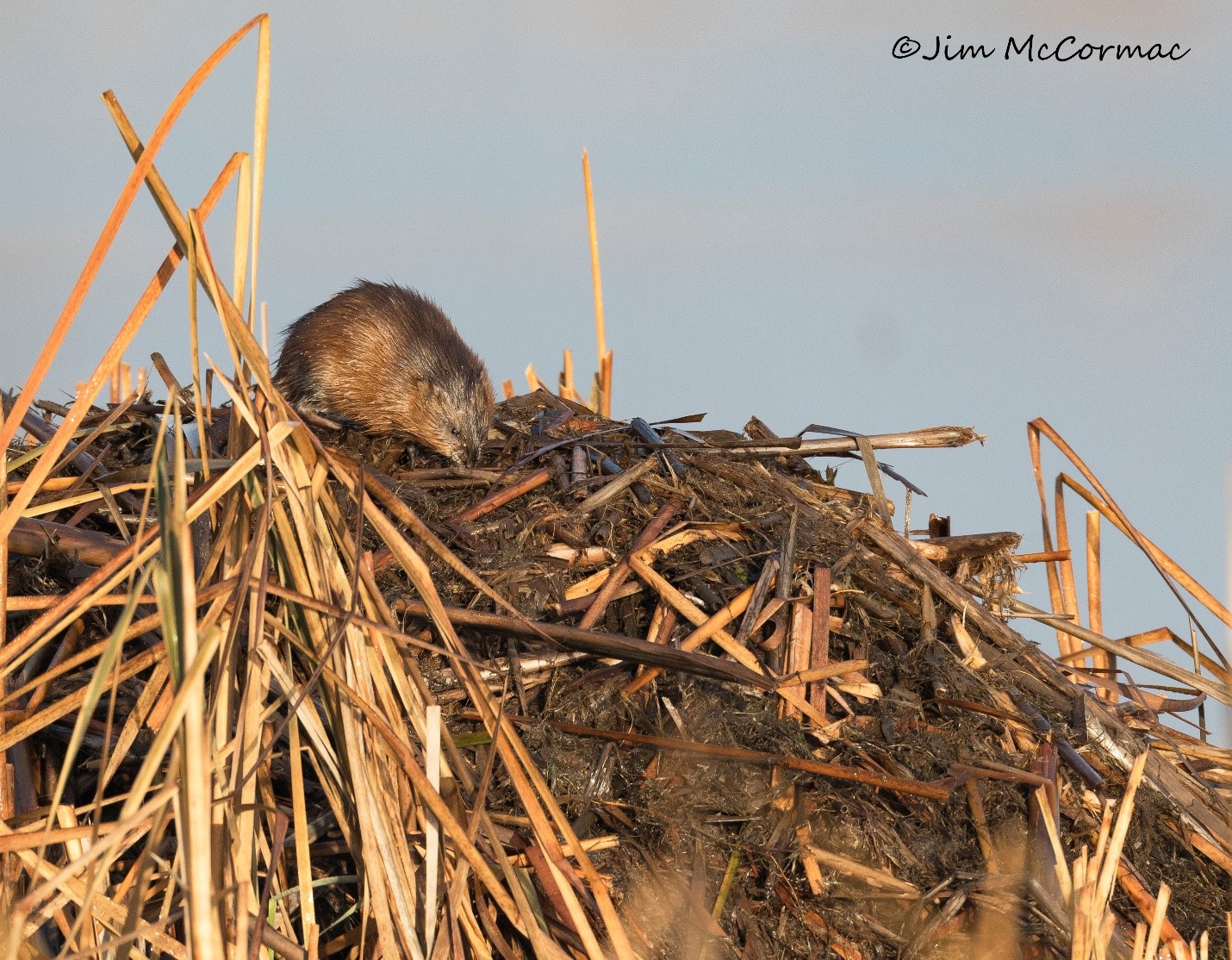
A muskrat melds glop from the marsh bottom into his lodge. When it dries, it will help anchor the cattail bulwark in place. The industrious little beast made about a trip every two minutes, returning with construction material.
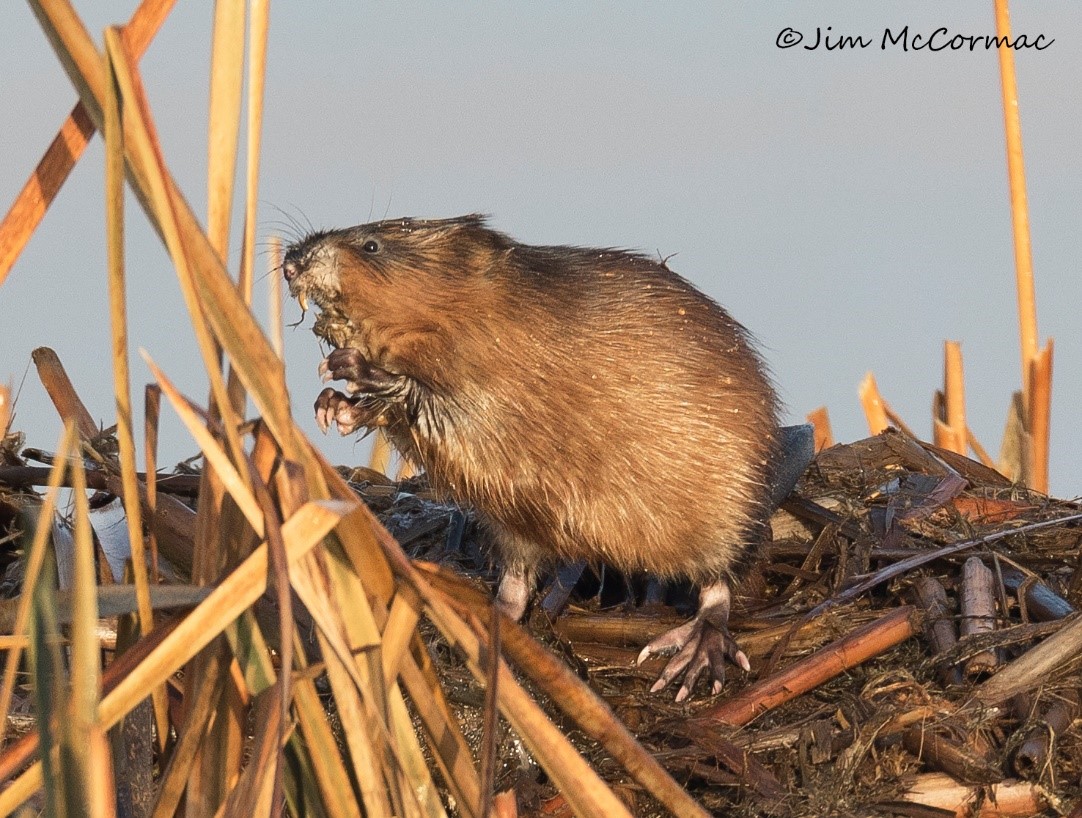
Muskrats are much maligned (like chipmunks), and that’s a shame. Much of the vitriol directed at them is due to problems they create with people’s structures, such as dikes. Muskrat can be enthusiastic tunnelers and over time their burrows can undermine levees. But in the big picture these mammals are an important part of a mixed-emergent marsh community and a keystone species. Their handiwork creates diversity in a wetland’s plant community, thus increasing habitat diversity. This in turn spawns a spike in the abundance and diversity of other animals, everything from dragonflies to ducks. And it’s no mystery why mink abound here – the large weasels prey on muskrat.
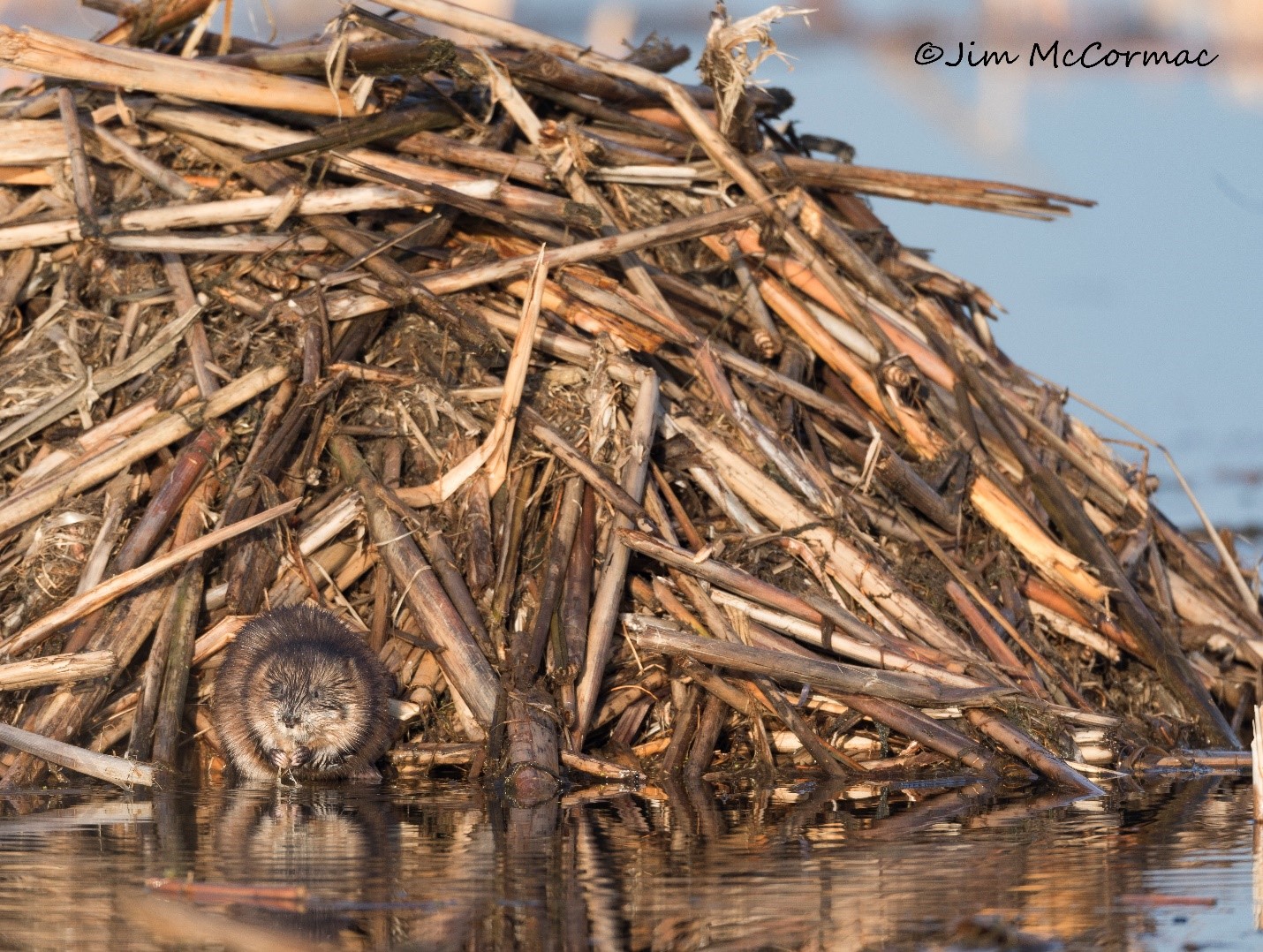
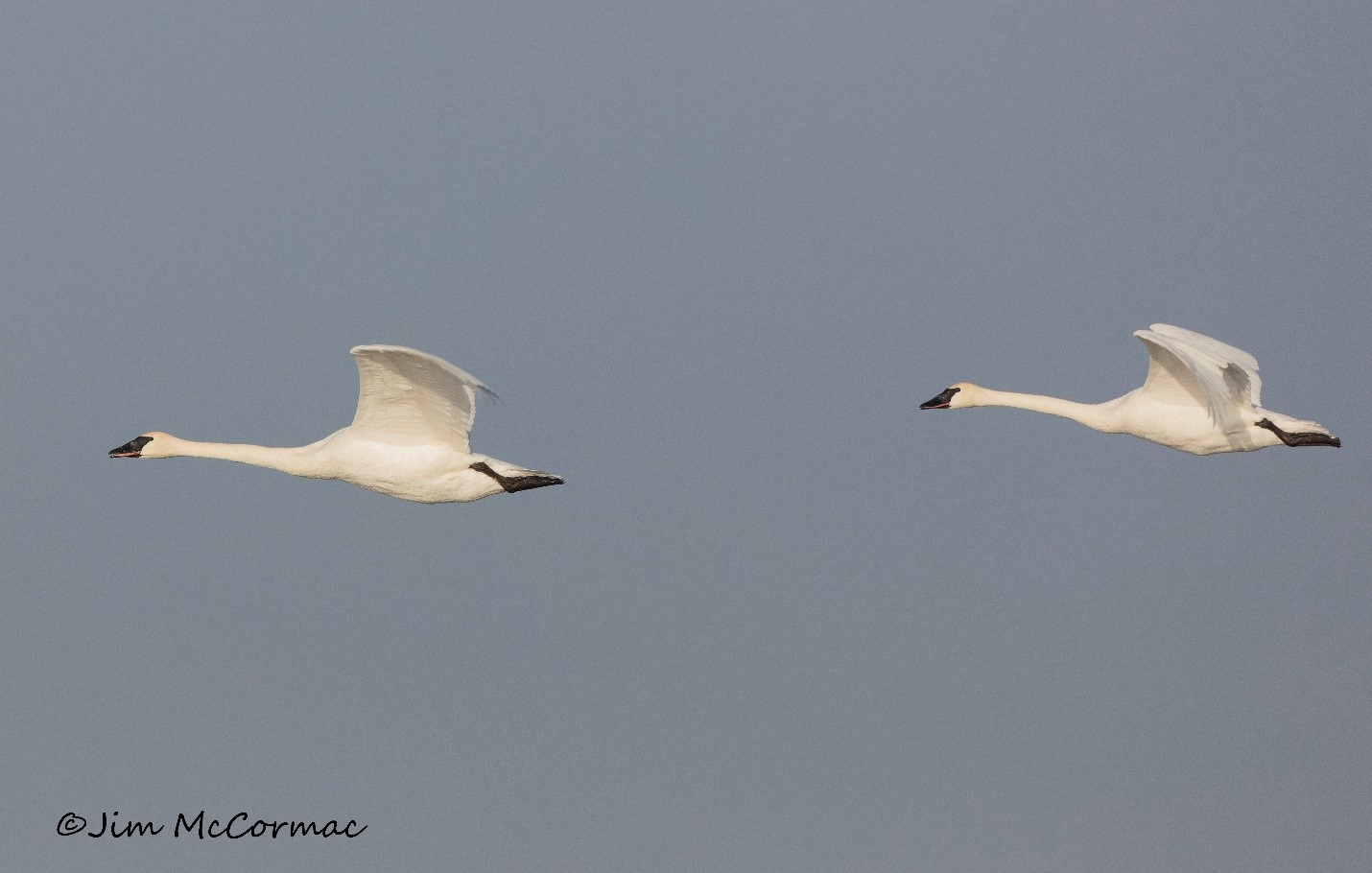
I was hoping for waterfowl, but we haven’t yet had a big push into this area. All I saw was a smattering of mallards, northern shovelers, gadwall, ring-necked ducks, and a few other species. This is a pair of trumpeter swans, and I must confess I wasn’t overly thrilled to see them. Our Division of Wildlife began an ambitious introduction program in 1996, and the birds are clearly taking hold and expanding. There’s no indisputable evidence that trumpeters ever bred in this region, and as we’ve all learned by the disastrous introduction of “giant” Canada geese to areas where they didn’t historically nest, large fowl can run amok and quickly become semi-domesticated. We shall see how the swan saga plays out, but I will not be surprised in the least if problems eventually arise. All that aside, trumpeters are spectacular birds, and their throaty bugles provide interesting aural ambience to the marshscape.
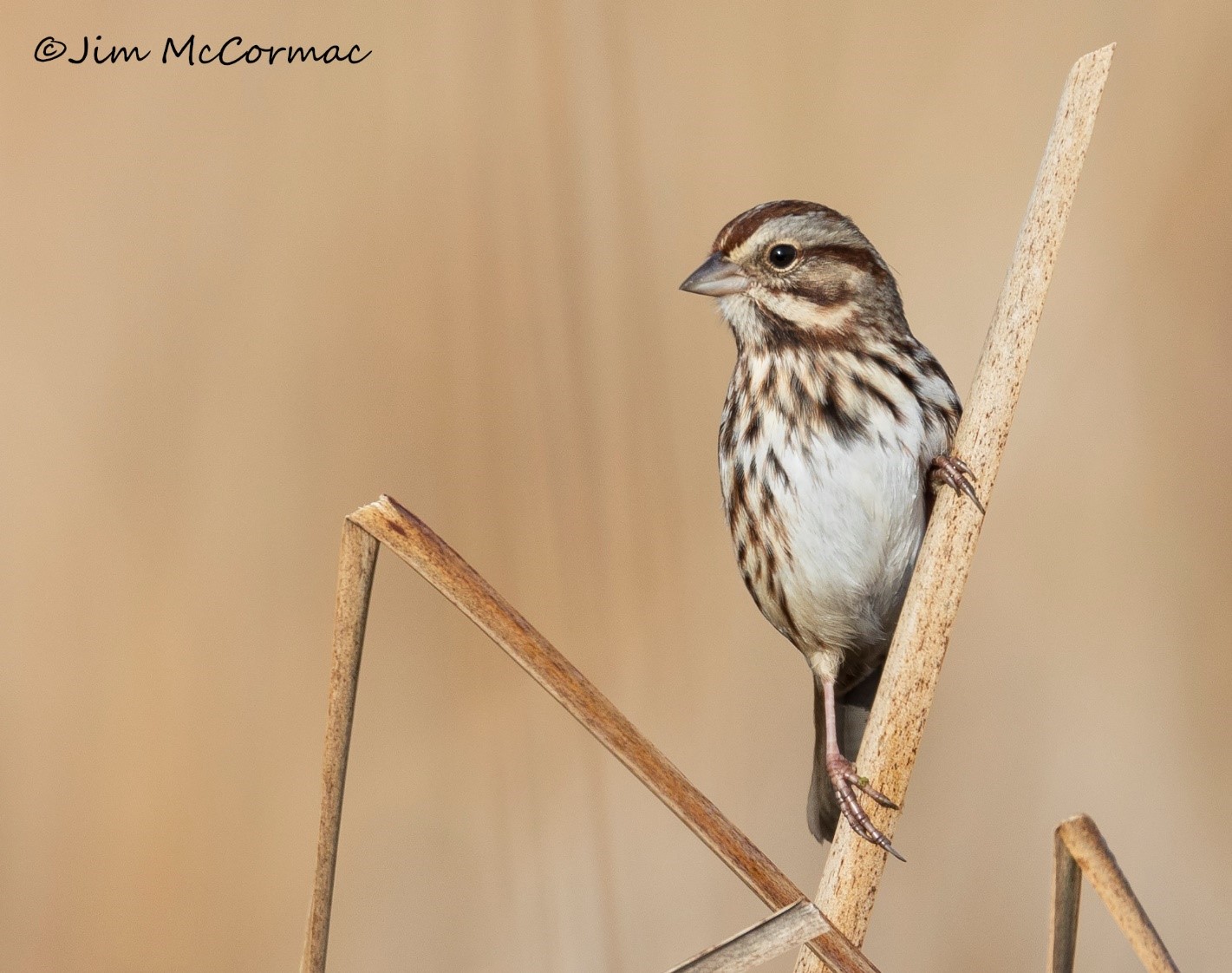
Sparrows abounded in the marsh and prairie, including plenty of song sparrows like this one. Swamp sparrows were at least equally numerous, and small flocks of American tree sparrows harvested grain from the prairie grasses.
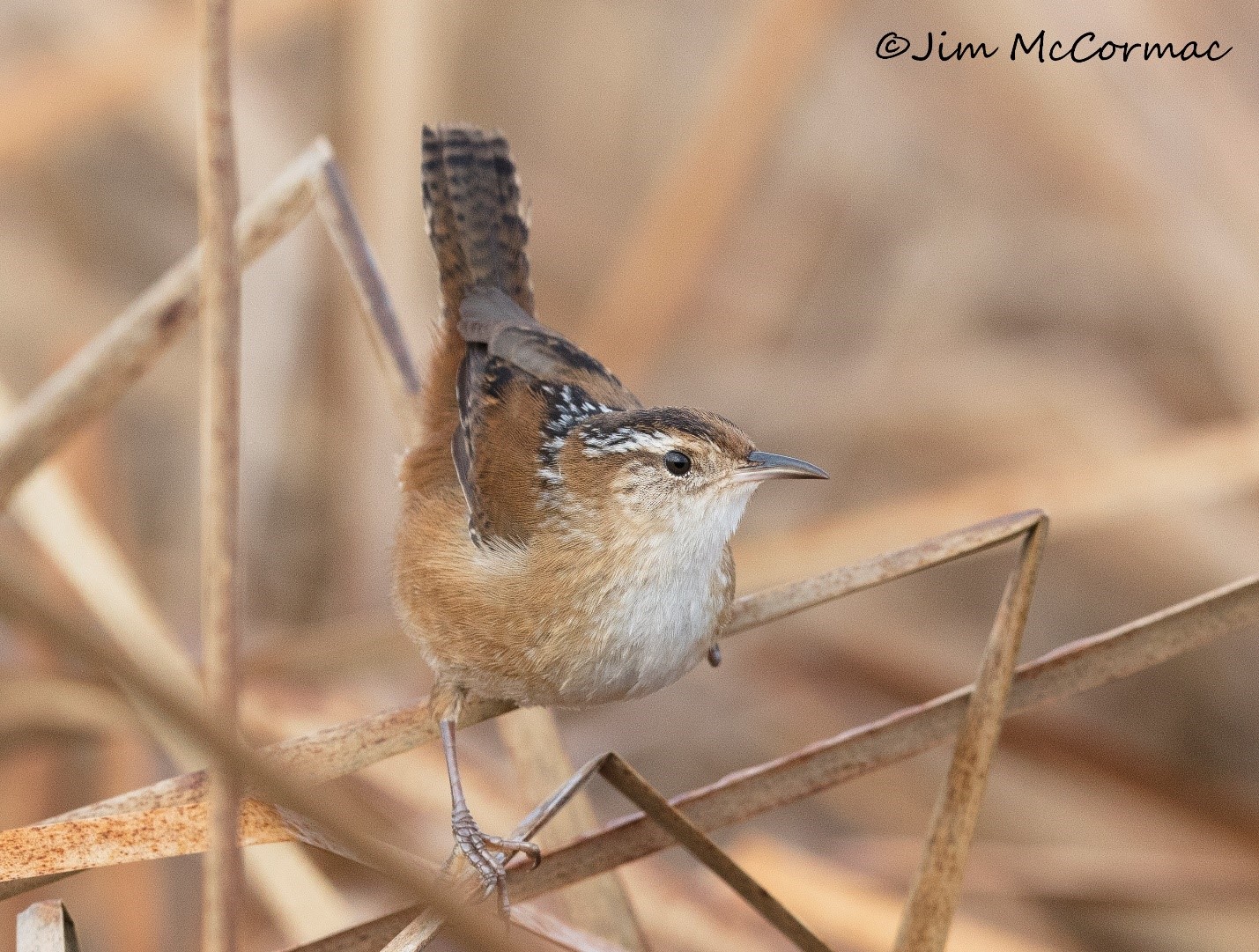
I had already heard the harsh chaks of two marsh wrens when I encountered this aggressive little fellow. He took umbrage to my presence and followed me along the trail for a good 100 feet, cursing me in wren-speak from the dense cattails. As is typical of these feathered busybodies, he mostly kept to the dense growth but did reveal himself a few times and I was ready.
The spot where I shot this marsh wren was a goldmine. A late common yellowthroat popped up, and sparrows were everywhere. A quick movement down the trail materialized into a mink, which briefly bounded down the path in its slinky-like gait. Longspurs whistled overhead and as a finale, a merlin rocketed low over the marsh, spotted me and juked slightly off to the west, depriving me of possible photos. No worries, I was mostly interested in my diminutive but sassy stub-tailed wren.
By now, temperatures were in the low 40’s, sluggish western chorus frogs and spring peepers slowly creaked out their songs, and, amazingly, a few fall field crickets and striped ground crickets were attempting to sing. Four hours had already passed by, and it was time to head for home.
Ohio Birds and Biodiversity (Jim McCormac)
A photographic amble through a prairie marsh (original on Jim’s blog)
